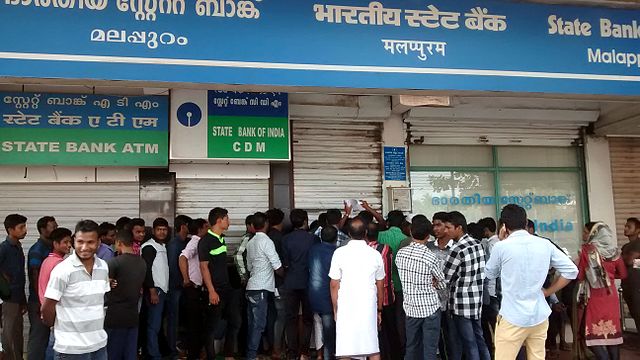
Kottakkalnet
On Friday night, the authorities of India launched a large-scale fiscal reform, implying the introduction of a single value-added tax on goods and services (Goods and Services Tax) - it will spread to the whole country instead of various charges at the state level. This step is considered unprecedented since attempts to harmonize the taxation have been undertaken since 2003. The government hopes that simplifying the tax system will support not only domestic consumption, but also exports, as well as will reduce the share of the informal sector in the economy and increase tax collection. "A single tax is a simple, transparent system that will prevent the generation of shadow capital and limit corruption", Prime Minister Narendra Modi said on Friday.
The reform will replace 500 different federal and local taxes. The single tax will be applied at four rates (5%, 12%, 18% and 28% depending on the product category, maximum is provided for carbonated drinks, shampoos and household appliances). A zero tax rate is provided for fresh vegetables and fruits, eggs and flour, milk, educational and medical services, and the rate for gold and rough diamonds is lower (3% and 0.25% respectively). According to the chief economic adviser Arvind Subramanian, in the future it is planned to include real estate, fuel and energy complex, fuel, natural gas and alcohol into the reform.
The Indian government hopes that the reform will be completed within six months (companies will have to apply a new type of tax reporting). Adaptation to the previous large-scale reform of the monetary system took approximately the same amount of time. The reform was announced in November 2016 and was intended to replace large denominations with new ones. They had to be received at a bank (information on exchange of over $ 3.5 thousand were transferred to the tax service to compare with income declarations). This measure was mainly aimed at combating the shadow economy.
According to the International Monetary Fund, whose experts participated in the reform’s preparation, transition to a single tax would increase GDP growth rates to 8% per annum (6.8% in 2016) by creating a single national market and removing barriers to interstate commerce, as well as reduce logistics costs for exports. The fund expects that the increase in fees will reduce the budget deficit and lower the level of public debt (now about 70% of GDP). Now, the ratio of budget revenues to GDP in India is lower than in other developing countries (17.5%), the IMF points out.
source: reuters.com
The reform will replace 500 different federal and local taxes. The single tax will be applied at four rates (5%, 12%, 18% and 28% depending on the product category, maximum is provided for carbonated drinks, shampoos and household appliances). A zero tax rate is provided for fresh vegetables and fruits, eggs and flour, milk, educational and medical services, and the rate for gold and rough diamonds is lower (3% and 0.25% respectively). According to the chief economic adviser Arvind Subramanian, in the future it is planned to include real estate, fuel and energy complex, fuel, natural gas and alcohol into the reform.
The Indian government hopes that the reform will be completed within six months (companies will have to apply a new type of tax reporting). Adaptation to the previous large-scale reform of the monetary system took approximately the same amount of time. The reform was announced in November 2016 and was intended to replace large denominations with new ones. They had to be received at a bank (information on exchange of over $ 3.5 thousand were transferred to the tax service to compare with income declarations). This measure was mainly aimed at combating the shadow economy.
According to the International Monetary Fund, whose experts participated in the reform’s preparation, transition to a single tax would increase GDP growth rates to 8% per annum (6.8% in 2016) by creating a single national market and removing barriers to interstate commerce, as well as reduce logistics costs for exports. The fund expects that the increase in fees will reduce the budget deficit and lower the level of public debt (now about 70% of GDP). Now, the ratio of budget revenues to GDP in India is lower than in other developing countries (17.5%), the IMF points out.
source: reuters.com


















